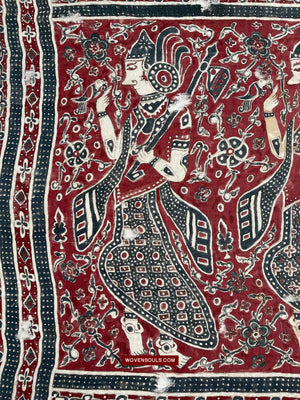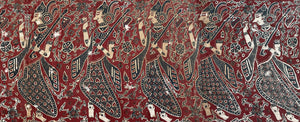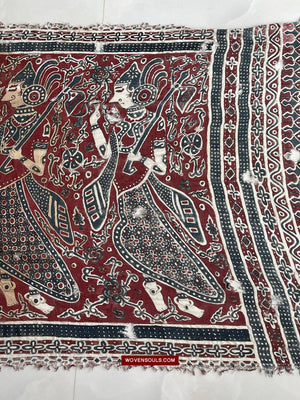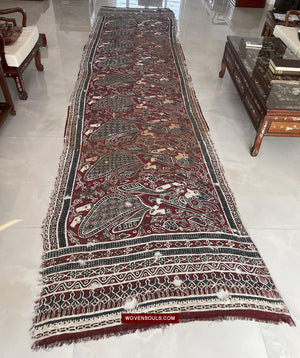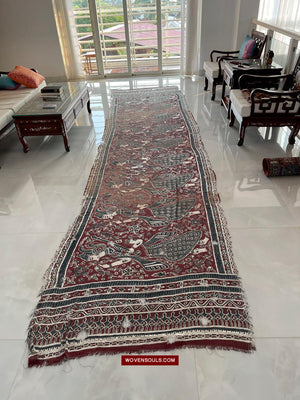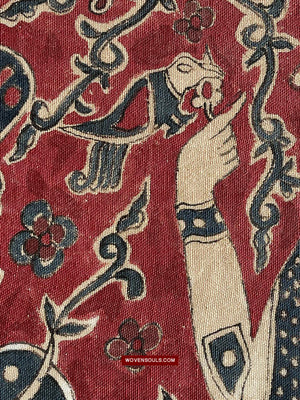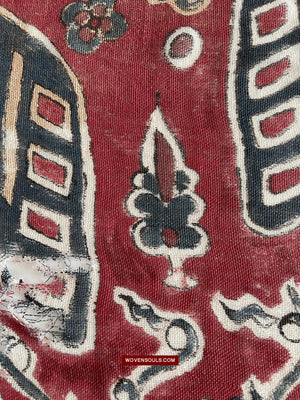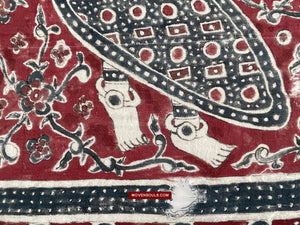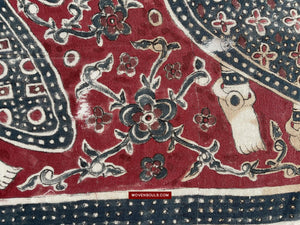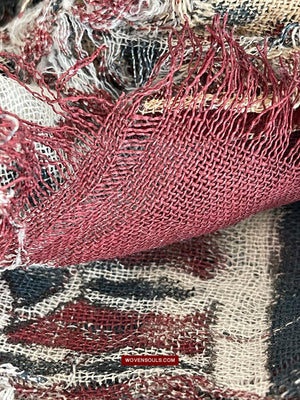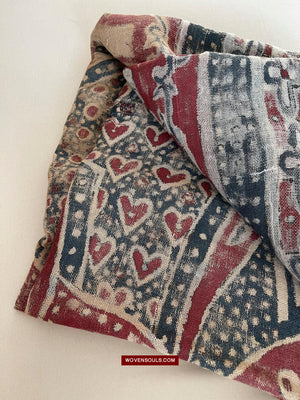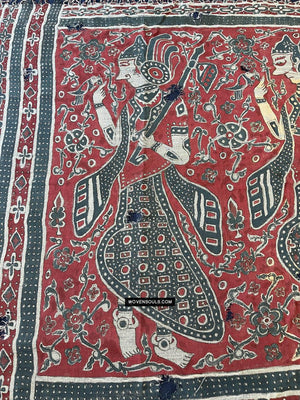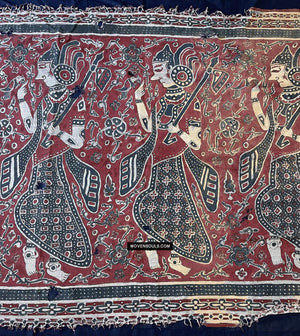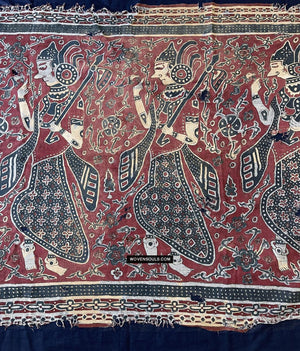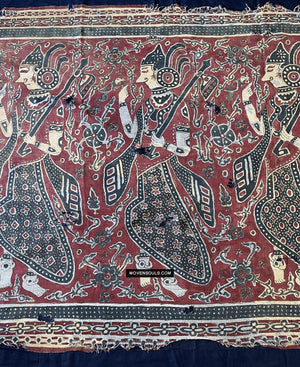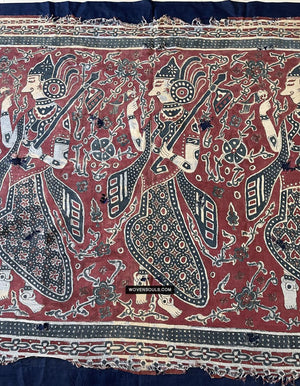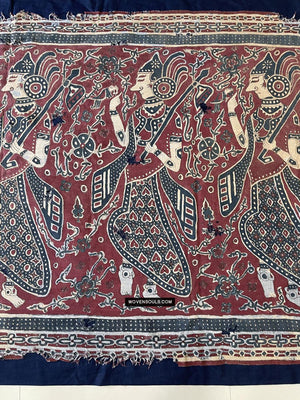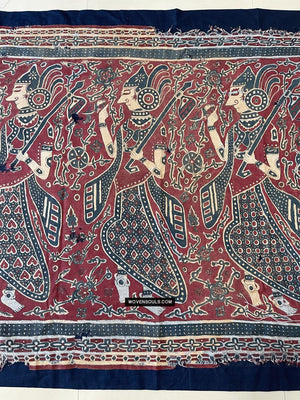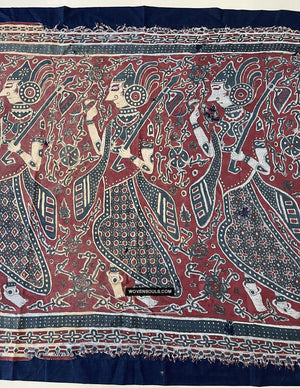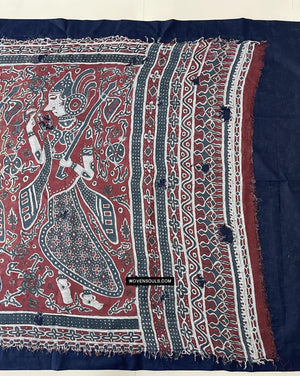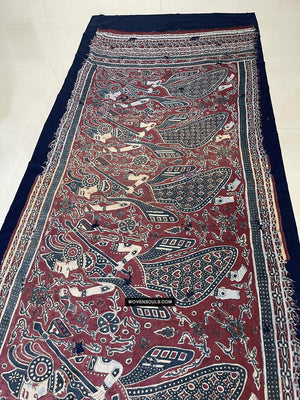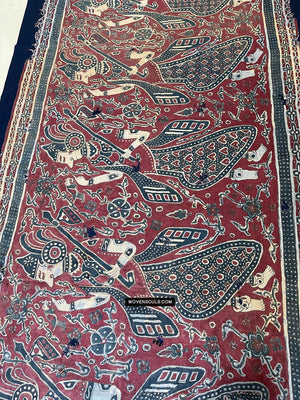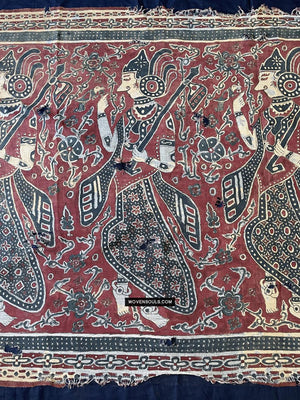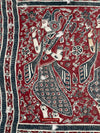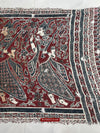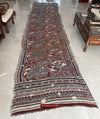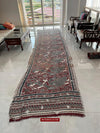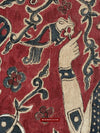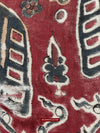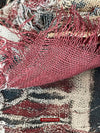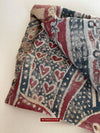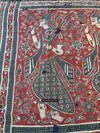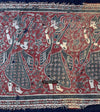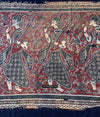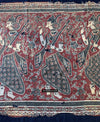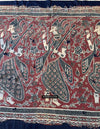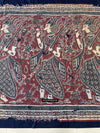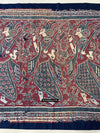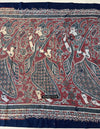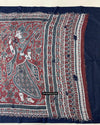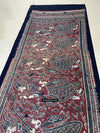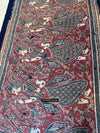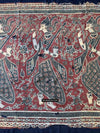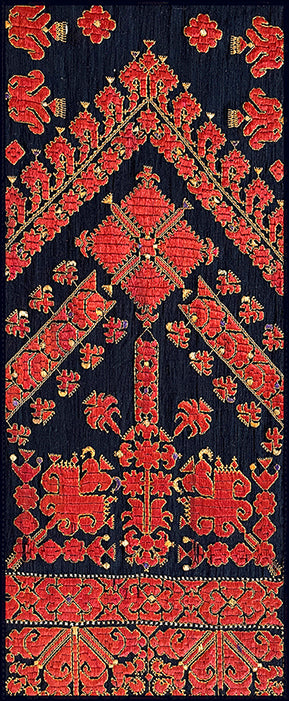Your Cart is Empty
1642 Rare Toraja Ceremonial Cloth with a Row of Female Musicians
Rare Toraja Ceremonial Cloth with a Row of Female Musicians
Large complete panel depicting a procession of 9 women musicians with their musical instrument (most likely the Tanpura), each with a uniquely patterned skirt.
The direction of the feet opposes the direction of the faces .. so the twirling suggests that they are also dancing.
Appears to be hand-drawn and not block-printed.
MY NOTES ON 1642
This textile is similar to the 'Ceremonial Cloth and Heirloom Textile with Row of Female Musicians' at the LACMA.
The LACMA textile is stated to be over 3 centuries old but 1642 is estimated to be younger.
Wovensouls Asset 1642 has the following unique features stated below:
MY NOTES ON 1642
The similarity of layout with the museum textiles is self-evident
We see a number of women wearing similar outfits and carrying a musical instrument each, all facing one direction.
But major differences also exist.
For example,
1. The faces in 1642 are slim, long and angular and look distinctly different from the round plump faces in the Gujarat textiles. The faces here probably depict the Indonesian face - where this textile is said to originate.
So while the theme is the same as the Gujarat textiles in museums, this textile has been created with a well-developed identity of its own probably within Indonesia
2. The red is deep and strong and my guess is that this is cinnabar.
Shri Jagdish Mittal's states : “the use of a red background in paintings is an ancient hindu tradition being especially prevalent in western indian miniature paintings from the 11th to the 16th century and in paintings from many other styles in the 16th and 17th centuries.
In old scrolls the red used was an expensive pigment made by the artists from mineral ‘singraf hingul” or crude cinnabar. But from 1840 this pigment as well as some others disappeared..... as synthetically made colors produced in Europe, became easily available, cheap and easy to use.
3. The cloth is very loosely woven – a bit like gauze. Now in some sections the fabric there appears to be a coat of stiffening agent.This has not been applied uniformly so sections of the cloth remain bare & exposed - mainly in the white undyed sections. The weave in these bare section is floppy to handle. Then, looking at the character of the fiber itself, that is thick, stiff & rigid, linen is a possibility.
4.The cloth is not double-sided - the drawing is only on the front. In this textile all the musicians are facing the left end of the textile (as we stand facing the textile).
5. Note the skirts worn all have unique designs. This suggests a leisurely creation by the artist in which special attention has been paid to create a variety of motifs.
The details of 1642 are:
Age: The age is unknown but in my opinion this is about 50-80 years old
Size: 182 x 44 inches / 462 x 112 cm (without the blue backing which adds a couple of inches all around)
Condition: Fading overall. Frayed at edges, parts of borders missing, many holes, tears etc. Yellow staining (mordant maybe?) over a sections of the cloth.
Now mounted on dark blue linen. [Not present in many photos]
***
Questions that arise about this textile:
Is it an original?
1. In an intentional copy or a reproduction, the artist takes utmost care to ensure that the copy is as close as possible to the original. In this case the faces are so unmistakably different from the Gujarat pieces that it is unimaginable that the artist intended this as a copy. The faces in the wovensouls piece have a unique identity and therefore leads to the conviction that this is an original and NOT a reproduction or copy. It is most likely just a younger version.
Is it a "ceremonial" cloth from Toraja?
While literature calls these 'ceremonial' textiles, there is no further elaboration on the ceremony.
Assuming that these are ceremonial cloths, there should be ceremonies associated with these cloths. And ceremonies that are followed by a community would have been practiced over generations and the practice would span decades. And therefore, the supporting materials - such as these textiles - would continue to be in demand and continue to be produced - not just five of six times in the history of that culture, but dozens of times if not hundreds of times over decades and centuries.
As long as the community continues it's traditional ceremonies, even after allowances for the minor variations ascribed to evolution in method & materials, the overall construct would remain intact. And so such cloths should be seen either in use or in museums or be found in the collective memory of the people. Given that the culture of Toraja is exceptionally well-preserved, not finding such a piece would be inexplicable.
Now the common understanding is that this group of textiles is from Toraja. In my initial interviews with local people in Toraja, there is no obvious recognition of this type of cloth. Secondly it is radically different from all the other textile groups of Toraja.
And so the original notes written by textile lovers and travelers in the past leave me with many unanswered questions.
This needs further investigation and will be the subject of my next exploratory research project in Toraja.
This item has spent a lifetime being used for the purpose of its creation with the original artist/user. Signs of this life lived heartily may be present on the piece in the form of stains, thread loss, loose threads, holes, tears, color run and other imperfections. Therefore the condition must be assumed to be “not” perfect. More photos of such imperfections will be provided on request.
***
Like it? Share it with friends on Facebook!
.......................................................................................................................

























